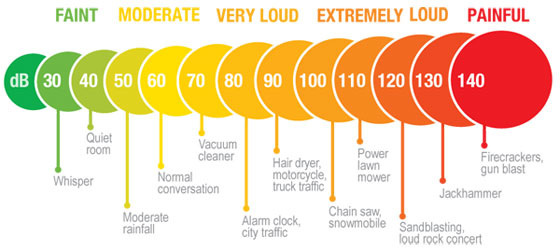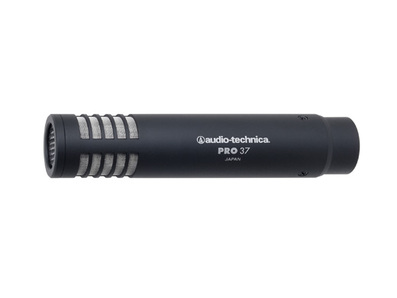|
Decibels (dB) - a reprint from an article on our website Simply stated, the decibel is the measurement of how loud something is. The human ear can only handle so much volume until it becomes damaged. This is especially true regarding being in a loud volume environment for long periods of time and consistent exposure to high decibels. I have friends of mine that have played music professionally for many years, and a lot of them have Tinnitus or permanent hearing damage. Not fun. Music can be really great when it is loud. There's a power to it when you are pushing the volume envelope, but when it boils down to it, you have to be sober minded of when too loud is just too loud. All of us sound engineer folks hate this conversation because almost every Sunday, someone will come by to complain that it was "just too loud." Yes, yes - I know...it could be barely distinguishable, and somebody is still going to complain. What I am talking about here is a predetermined dB level that you won't go beyond. This predetermined level along with a good decibel meter will really be helpful to avoid future gripers and the like. If you keep it anywhere from 85 to 95 dB, you'll be in better shape. 100 dB is pushing it. Old folks will come out of the woodwork to tell you it's too loud. I've been there. One time I was pushing 110 dB easy and an old lady came up to me and said, "it's soooooooooooooo louuuud!!!!!," and I said, "I KNOW, ISN'T IT GREAT?" I had to yell because she couldn't hear me over the chest thumping glory! I'm sure she left at that point. The hard truth is, is that she was right, and I was wrong. We cannot forget what we are there for as live sound engineers. We are there to serve God through serving the people. I also want to mention perception. What I mean is that most of the time, you will be located in the worst mixing position possible in regards to being able to actually hear what is going on. Case in point: One time I was hired to do live sound for a women's conference in the early 2000's. The only place they agreed to put me was down low on the floor, and there were no speakers flown. Just some cheap speaker stands. I had some EAW LA325's and some of the house system (something made by EV), and off we go. The band is worshiping their faces off, and my mix is sweet. Well of course, just about that time, I had a lady come to the "booth" and say, "Can you please turn it down, it's really loud." At first I thought I'd use my favorite line, "I know, isn't it great," but decided I better go check it out because between me and the boxes were about 2000 ladies with big hair & big dresses. That's a lot of sound absorption going on! Ha! So, I go up there to hear what they are hearing, and she was totally right. I could have sworn I saw the women's hair up front being blown back from the onslaught of sonic fury. ASK YOURSELF, "IS THE CONGREGATION HEARING THE SAME THING I'M HEARING?" Sometimes it'll do you good to walk around every now and then to make adjustments. As a matter of fact, you should do this on a regular basis as it will really aid in your mixing decisions.
1 Comment
Let's talk about the frequency 7 Khz:
Need more "snare" sound from a dead snare - boost 7 Khz. Need more "sizzle" in cymbals - boost 7 Khz. Need less sibilance from vocals - cut 7 Khz (this can really be anywhere from 4 Khz to 9 Khz...but 7 Khz is the most common denominator for sibilance. Need more "grit" in an electric guitar - you guessed it, boost 7 Khz. Note: 7 Khz is the general area where these characteristics hang out. Your mileage may vary according to the instrument, but overall, the above will get you very close. One of the most versatile and affordable condenser microphones you can purchase, is the Audio Technica Pro37. It truly is a jewel of a mic! This microphone excels on almost anything you throw at it. It is a killer microphone for electric guitars, snares (yes, it can take the db), acoustic instruments, drum overheads, piano, etc. Not only is it killer for so many things, but it is also very affordable for the quality and versatility you get in return. At $129, it truly is a steal!
|
Do you like vintage recording gear and articles? You should visit our sister site: The Vintage Audio Portal!
**Advertise With Us! We have thousands of visitors a day. Contact us here to learn more.
Archives
August 2021
Categories |



